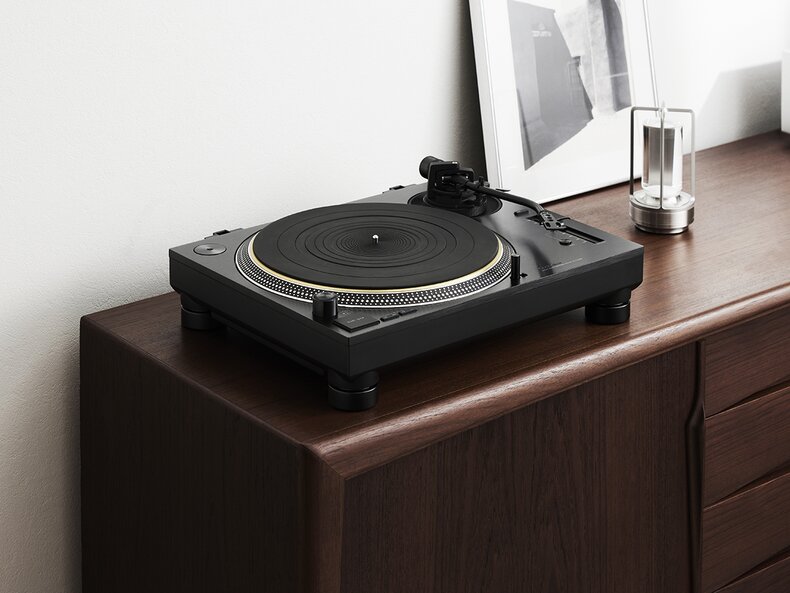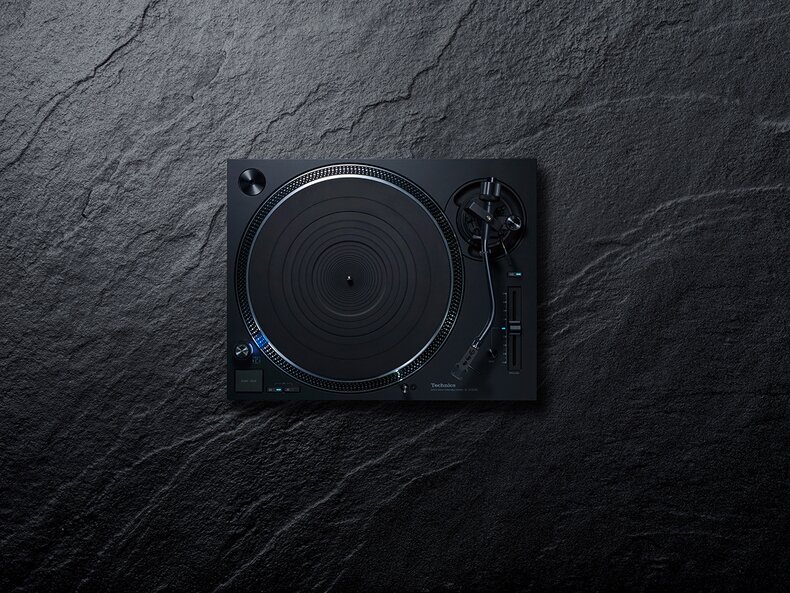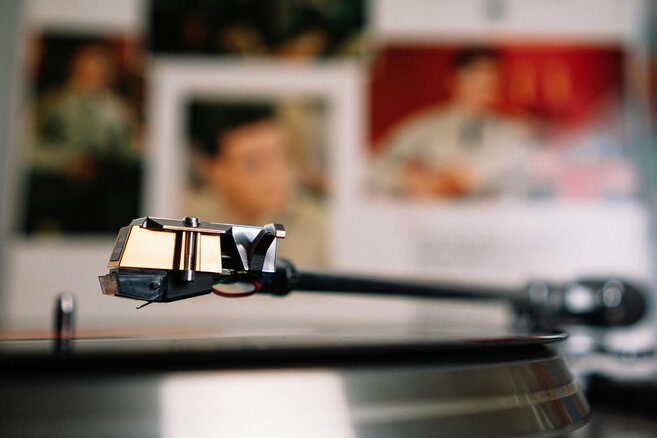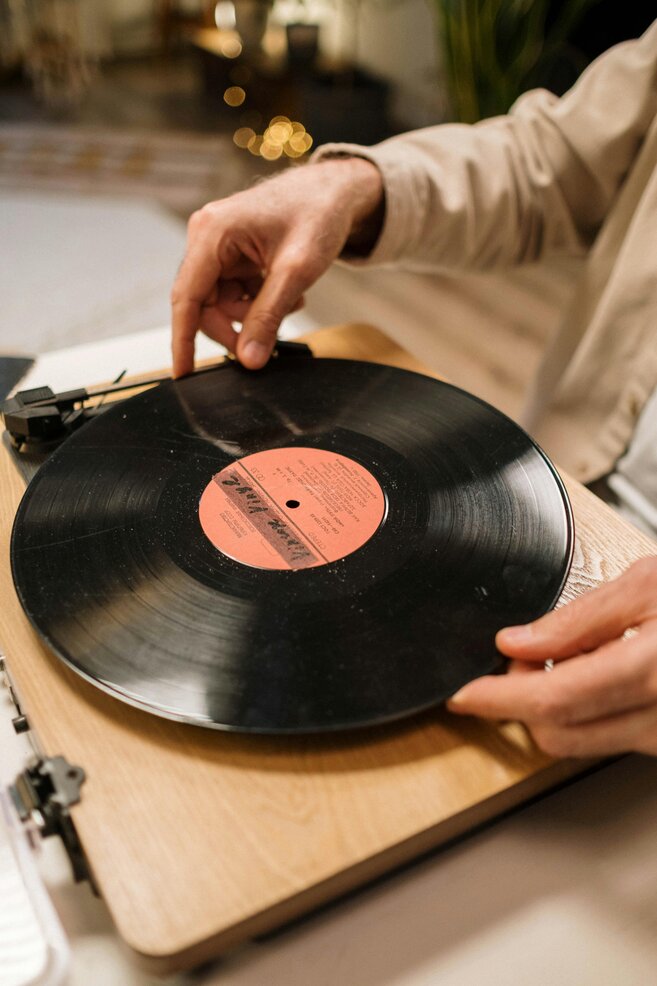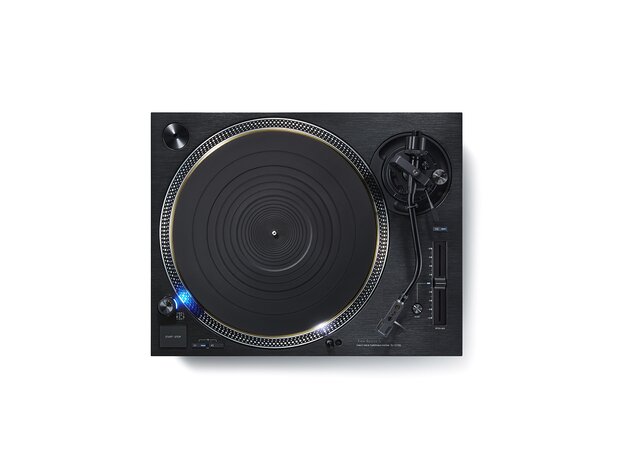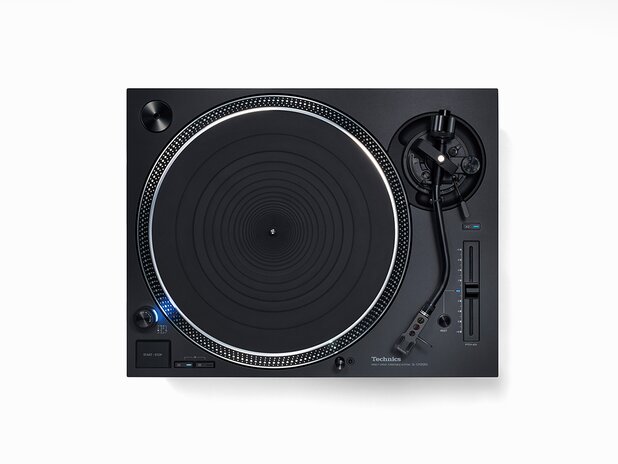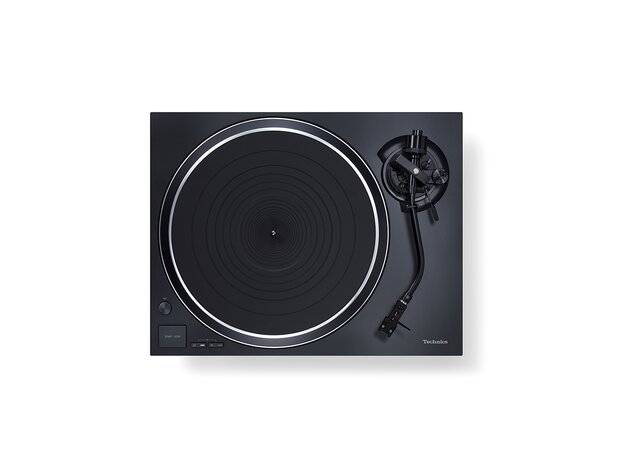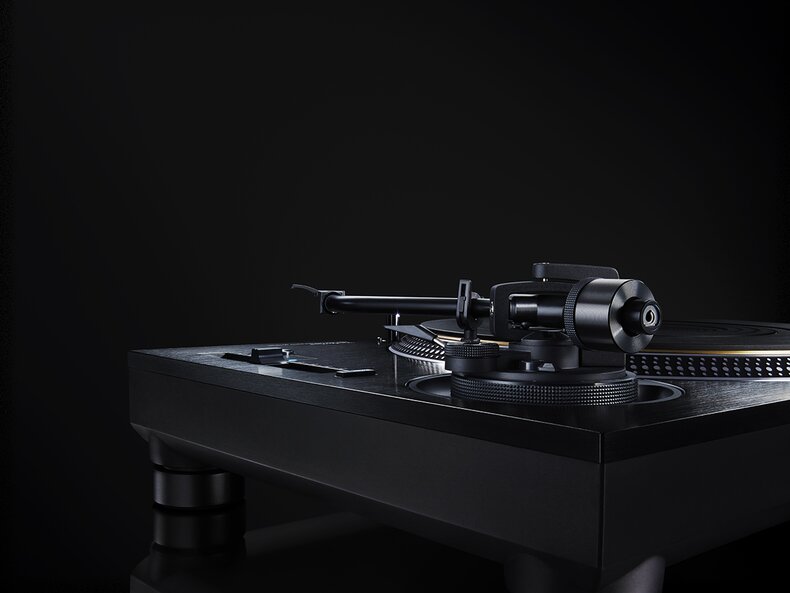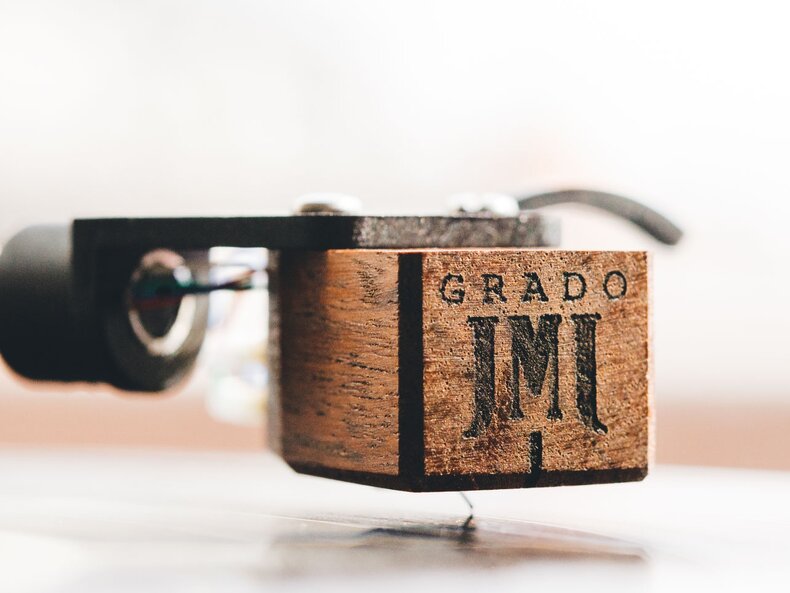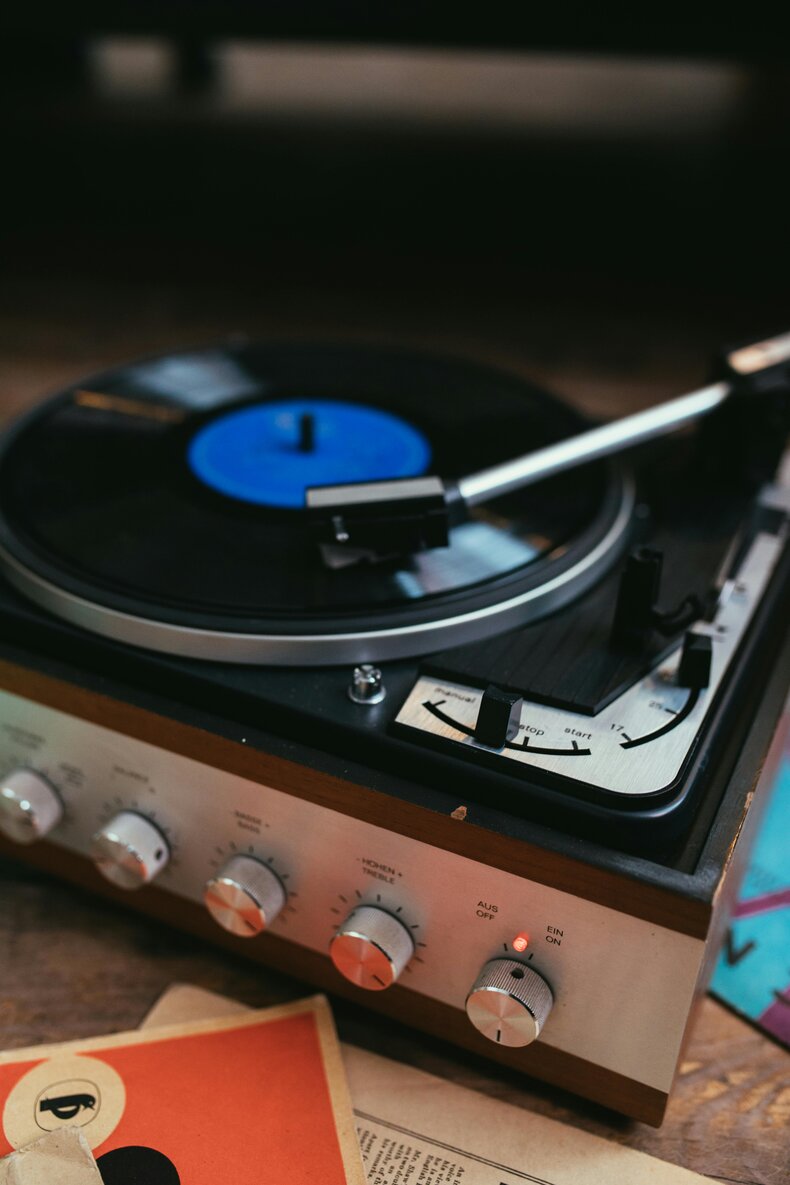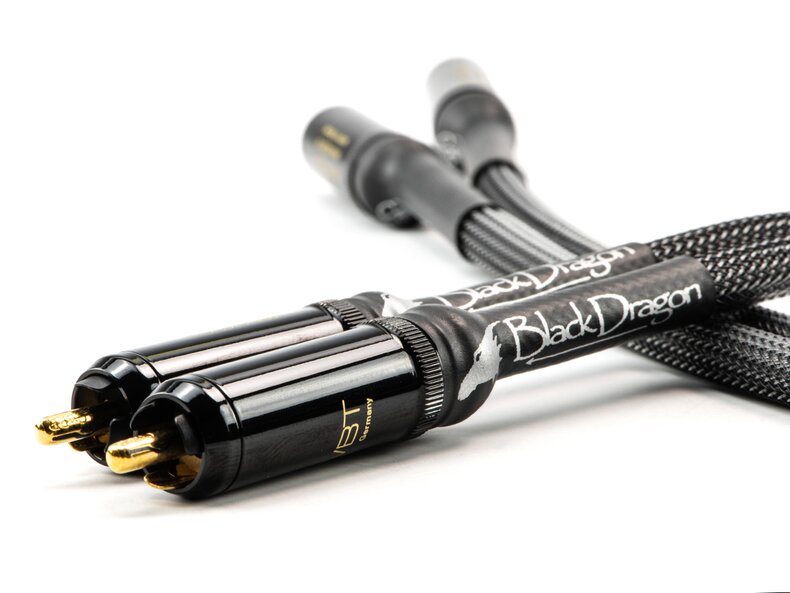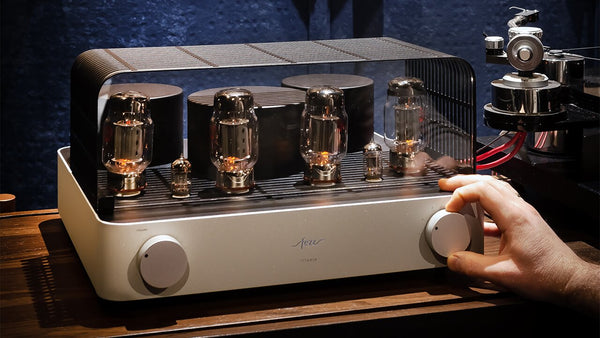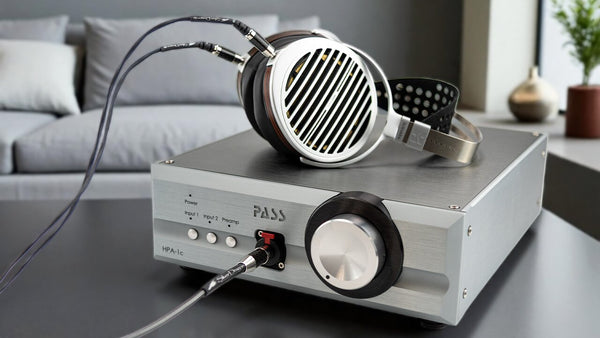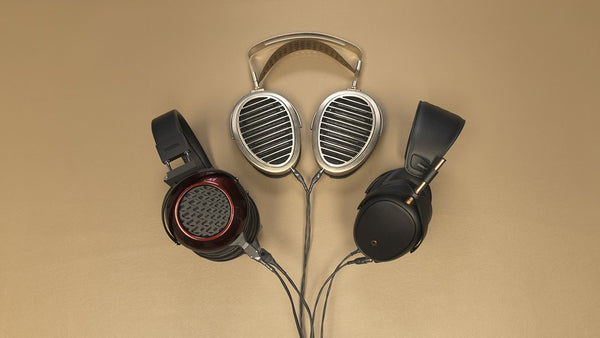Technics Turntable Anti-Skating: The Tonearm Solution
How To Set Up Your Turntable For Optimal Performance
In the age of digital streaming and compressed audio files, there's an undeniable allure to the warm, rich sound of vinyl records spinning on a turntable. In recent years, we've witnessed a remarkable resurgence in the popularity of turntables and vinyl records, with audiophiles and music enthusiasts alike rediscovering the magic of analog sound reproduction. But it's not just nostalgia driving this revival—it's a quest for authenticity, a desire to experience music in its purest form. And while vinyl records offer a tangible connection to the music, it's the turntable that serves as the gateway to sonic bliss. Setting up your turntable properly is crucial to unlocking its full potential and achieving the best sound from your audiophile hi-fi sound system. From cartridge alignment to tracking force, every aspect of the setup process plays a pivotal role in preserving the integrity of the audio signal and delivering an immersive listening experience.
One of the most common issues encountered in turntable setup is skating—a phenomenon where the tonearm and stylus experience lateral forces that pull them toward the center of the record as it rotates. Skating force can introduce distortion and tracking errors, compromising the fidelity of the audio playback. To mitigate skating issues, it's essential to properly pair your cartridge with the turntable and understand weight limitations. Cartridge compatibility and alignment play a crucial role in minimizing skating force, ensuring smooth and accurate tracking across the record groove. Additionally, understanding the optimal tracking force for your cartridge and adjusting it accordingly can help reduce skating and preserve the longevity of your records. But the quest for sonic perfection doesn't end there. Attention to detail in turntable setup—from leveling the platter to fine-tuning the tonearm's vertical tracking angle—can make all the difference in achieving pristine sound quality.
In this blog article, we'll delve deeper into the intricacies of turntable setup and explore the importance of proper cartridge pairing, understanding weight limitations, and addressing skating issues. By setting up your turntable properly, you can unlock the full potential of your vinyl collection and experience music in all its analog glory. So dust off your records, fire up your turntable, and join us on a journey to sonic perfection.
What Is Skating?
In the context of turntables, skating refers to a phenomenon where the tonearm and stylus (or needle) experience lateral forces that cause them to move toward the center of the record as it rotates. This movement is caused by a combination of factors, including the stylus's contact with the record groove, the record's rotation, and the geometry of the tonearm.
Skating force is primarily due to the offset angle of the tonearm pivot and the friction between the stylus and the record groove. As the stylus tracks the groove, it creates a centrifugal force that pushes outward, while the offset angle of the tonearm pivot creates an inward force. The result is a lateral force that pulls the tonearm toward the center of the record.
Skating force can affect the performance of a turntable by causing uneven wear on the stylus and groove, as well as introducing distortion and tracking errors in the audio signal. To counteract skating force, turntables are equipped with anti-skating mechanisms, which apply an outward force to the tonearm to balance the inward force caused by skating. Proper anti-skating adjustment helps to ensure accurate tracking and minimize distortion during playback. This can occur on any record player, whether it be an all-in-one turntable, entry-level turntable, a Bluetooth turntable, belt-drive turntable, automatic turntable, direct drive turntable, one with a built-in phono preamp or powered speakers, your record collection will thank you if you take the time to set up your player properly.
Things to Consider When Setting Up Your Turntable
There's one downside when dealing with physical media formats like vinyl records (for turntables) and CDs (for CD players): since they are physical items they can be damaged or degrade over time without proper care. If a record gets damaged it can skip or cause audio artifacts in the signal. If a compact disc gets damaged or scratched it can cause the audio to be unreadable and otherwise unplayable. You have to take care of your physical media collections to help preserve the quality of sound.
In a properly set up turntable, the tonearm moves across the record with an even pressure and weight. If the tonearm/cartridge is too light or high, it can skip across the grooves and interrupt playback. If it it too heavy then it can cause too much pressure on the needle which can result in damage of the needle and the record. This is why you'll find max weight recommendations on the counterweight to balance out the weight of the cartridge and headshell. Always check the specifications in your turntable's manual to see what the recommended guidelines are.
The last thing you should consider is making sure your turntable is on a level surface. Because the tonearm is privy to weight distribution, it is integral that your turntable is level so that the components are all working as they are designed to interact with gravity. If your table is lopsided then this can affect the counterweight and overall weight distribution of the tonearm to whatever side is more downward angled on the turntable. All of these components (tonearm, gimbal bearings, pivot mechanisms, etc.) work in tandem to provide a consistent and quality audio experience time and time again. See more below for a quick step-by-step guide to setting up your turntable.
Understanding Anti-Skating Mechanisms
In the realm of high-end audio equipment, the term "anti-skating" often pops up in discussions about turntable setup and performance. But what exactly is anti-skating, and why is it so crucial in the world of vinyl playback? Let's dive into the intricacies of this essential mechanism and shed some light on its role in preserving the integrity of your beloved records.
Anti-skating is a feature found in turntables that helps to maintain proper tracking of the stylus (the needle) on the record groove. When a record is playing, the stylus exerts pressure against the groove walls, causing it to naturally move towards the center of the record due to centripetal force. This inward force can cause uneven wear on the groove walls and affect the sound quality.
Anti-skating mechanisms are designed to counteract this force by applying an outward force to the tonearm, counteracting the inward force exerted by the groove. By balancing these forces, anti-skating helps to keep the stylus centered within the groove, ensuring accurate tracking and minimizing distortion.
The adjustment for anti-skating force is typically located on the turntable's tonearm or control panel and is usually set to match the tracking force of the cartridge. Proper anti-skating adjustment is essential for achieving optimal sound quality and extending the lifespan of both the stylus and the record.
The Purpose of Anti-Skating - So, why is skating force such a concern for audiophiles and turntable enthusiasts? The answer lies in its potential to disrupt proper stylus alignment and cause uneven wear on the record groove. Skating force can introduce tracking errors and distortion, compromising the fidelity of the audio playback and detracting from the overall listening experience. Enter anti-skating mechanisms. These clever contraptions are integrated into the design of high-end turntables to counteract skating force and maintain proper stylus alignment. By applying an outward force to the tonearm, anti-skating mechanisms balance the inward force caused by skating, ensuring that the stylus tracks the record groove with precision and accuracy. In discussing weight and balance, if you have a tonearm + cartridge combo that is over the recommended weight specifications for the turntable, it can actually cause issues with the anti-skating mechanisms of the device. If everything is not in balance, it creates problems of compliance, tracking, or cantilever issues. Proper setup for your turntable is critical for the anti-skating mechanisms to work as designed.
Preserving Your Vinyl Collection - Beyond the realm of sound quality, anti-skating mechanisms also play a vital role in reducing groove wear and extending the lifespan of your cherished vinyl collection. By minimizing lateral forces on the stylus, anti-skating helps to prevent excessive wear on the groove walls, preserving the integrity of your records for years to come. In essence, anti-skating is not just a feature—it's a guardian of your vinyl playback experience. By maintaining proper stylus alignment and reducing groove wear, anti-skating mechanisms ensure that your turntable delivers the best possible performance, allowing you to immerse yourself in the warm, rich sound of analog music with confidence and clarity.
The Importance of Phono Cartridges in Turntables
A lot of audiophiles are tinkerers at heart, which is why they oftentimes collect different components for their hi-fi systems from various brands based on the sound that they like. It's a craft and a search in many ways: a constant pursuit for sound reproduction perfection. In the same way, audiophile-grade turntables are not free from tinkering hands. One of the most popular customizations you can do for your turntable to influence and improve the sound quality is to install a high-end phono cartridge.
There are a ton of different cartridge manufacturers out there, and Grado is one of our favorites here at Moon Audio. Materials always matter and affect sound more than people realize, and the wooden cartridges of Grado's Opus 3, Platinum 3, and Sonata 3 lines are known for the great warmth and musical presentation that they offer. Like all things Grado, they are handmade in their New York City home and feature the Grado signature sound: warmth and dynamics without sacrificing detail and clarity.
What is a Cartridge?
The phono cartridge, often simply referred to as the cartridge, is a critical component of a turntable's playback system. Its primary function is to convert the physical vibrations produced by the stylus (needle) as it tracks the grooves of a vinyl record into electrical signals that can be amplified and reproduced as sound. Here's a breakdown of the key roles and functions of the phono cartridge on a turntable:
- Transducer: The cartridge serves as a transducer, converting mechanical energy (the physical vibrations of the stylus in the record groove) into electrical energy (analog electrical signals). This process is essential for translating the analog information stored on the vinyl record into a format that can be amplified and played back through speakers.
- Stylus Mounting: The cartridge houses and securely mounts the stylus, which is the delicate needle that makes direct contact with the grooves of the record. The stylus's precise contact with the record groove is crucial for accurate tracking and faithful reproduction of the recorded audio.
- Generating Signal: As the stylus tracks the grooves of the record, it vibrates in response to the minute variations in the groove walls. These vibrations are transmitted through the stylus and cantilever (the small rod that holds the stylus) to a tiny magnet or coil inside the cartridge. The movement of the magnet or coil within the magnetic field generates a small electrical signal proportional to the vibrations of the stylus.
- Output Signal: The electrical signal generated by the cartridge is then sent through the tonearm wires to the phono preamplifier, where it is amplified and equalized to compensate for the specific characteristics of vinyl records. From there, the signal is further amplified by the main amplifier and sent to the speakers, where it is converted back into sound waves that we can hear.
Things to Consider When Choosing a Cartridge
When selecting a phono cartridge for your turntable setup, several key factors should be considered to ensure optimal performance and compatibility with your system. Here are the key factors to consider:
Cartridge Type: The two main types of phono cartridges are moving magnet (MM) and moving coil (MC).
- Moving Magnet (MM): MM cartridges are typically more affordable and easier to find. They produce a relatively high output voltage and are compatible with a wide range of phono preamplifiers.
- Moving Coil (MC): MC cartridges offer higher sensitivity and lower mass, resulting in improved tracking ability and lower distortion. They tend to be more expensive and require a phono preamplifier with higher gain to amplify their lower output voltage.
Stylus Shape: The shape of the stylus (or needle) is crucial for accurate tracking and optimal performance. Common stylus shapes include conical, elliptical, and microline (or Shibata). Each shape has its own characteristics in terms of contact area with the record groove and the ability to retrieve detail from the vinyl.
Compliance: Cartridge compliance refers to its ability to respond to the vertical movement of the stylus. It is determined by the cartridge's suspension system and affects its ability to track the record groove accurately. Cartridges with higher compliance are better suited for lighter tonearms, while lower compliance cartridges are better matched with heavier tonearms.
Output Level: The output level of a phono cartridge refers to the voltage generated by the cartridge when the stylus tracks the record groove. It is typically measured in millivolts (mV). Cartridges with higher output levels require less amplification from the phono preamplifier and are compatible with a wider range of systems. However, the output level should be matched to the input sensitivity of your phono preamplifier to ensure proper amplification and avoid distortion.
Compatibility: Consider the compatibility of the phono cartridge with your turntable and tonearm. Ensure that the cartridge mounting style (standard or P-mount) matches your tonearm and that the cartridge's weight and dimensions are compatible with your tonearm's tracking force and alignment settings. If the weight is not within the specification range for your turntable you can run into problems with the anti-skating mechanisms.
Quick Setup Guidelines for Your Turntable
- Level the turntable: Ensure your turntable is on a flat, stable surface and use a level to make sure it's perfectly horizontal.
- Set the tracking force: Adjust the counterweight at the back of the tonearm until the arm is balanced and floats freely. Then, set the tracking force according to the cartridge manufacturer's recommendations, typically between 1.5 to 2.5 grams.
- Adjust the anti-skate: Set the anti-skate to the same value as the tracking force to prevent the tonearm from skating inward or outward due to the record's rotation.
- Set the vertical tracking angle (VTA): Ensure that the tonearm is parallel to the record surface when viewed from the side. Some tonearms allow VTA adjustment by raising or lowering the tonearm base.
- Align the cartridge: Use a cartridge alignment protractor to ensure that the stylus is properly aligned with the record grooves. This involves adjusting the cartridge's position in the headshell.
- Set the azimuth: The stylus should be perpendicular to the record surface when viewed from the front. Some tonearms have adjustable headshells that allow you to set the azimuth.
- Check the stylus: Inspect the stylus for any signs of wear or damage, and replace it if necessary.
- Clean your records: Always play clean records to minimize wear on the stylus and maintain sound quality. Use a carbon fiber brush or record cleaning solution before playing.
Dragon Cables
Since turntables are equipped with RCA outs, we recommend pairing the Technics turntables with our award-winning Black Dragon Interconnect. The Blue Dragon is very neutral and natural sounding and the Black Dragon Interconnect takes this a step further with a bigger & fuller body with great bottom-end strength. if you have a forward or thin-sounding system then the Black Dragon would be the correct choice. The Black Dragon line complements analog-sounding systems, providing a great amount of musicality and a resolute presentation. If you are looking for a warmer sound, be sure to consider the Bronze Dragon Interconnect. Our top-of-the-line copper-based interconnect, the Bronze Dragon offers a balanced and musical sound with excellent bass control. The braided geometry in this design acts as a noise rejection barrier, making this an especially quiet cable for pro audio as well as home use. The Bronze Dragon Interconnect is the newest addition to our Dragon Interconnect lineup. It's modeled after the design of our top-selling Silver Dragon Interconnect but with pure UP-OCC copper.
Black Dragon Sound Signature: The Black Dragon is warm and smooth with a musical presentation. Copper strands enhance the body, shape, and immediacy of the music. The detail and expansiveness of the Black Dragon make it a flexible fit where a broad range of musical genres are played. It can also improve bass frequencies on bass-light headphones. The smooth, musical quality makes it a perfect fit for headphones that tend to sound a bit edgy or bright. Despite its warmth, the Black Dragon does not have a laid-back, lush sound. It is much closer to neutral, making it a very natural sounding cable.
Bronze Dragon Sound Signature: UP-OCC copper strands in the Bronze Dragon Interconnect provide the most musical and balanced sound that can be found in the marketplace. You get a wonderfully full presentation with the tightest control of bass we have heard to date from our Dragon Interconnects.
For more information on finding your signature sound, visit our Sound Signature Guide.
Why Dragon Cables?
You’ve heard the saying that a chain is only as strong as its weakest link, right? Well, the same applies to your brand-new audiophile-grade headphones or other audio components. The weakest link, in this case, is your stock audio cable or the cheap interconnects the manufacturer threw in the box just to get you up and running. Why is the audio cable always an afterthought, when it’s just as important as the rest of your system? At Moon Audio, we use the purest and best raw materials in our cables to unveil your music. We believe that materials matter and your audio cables should have the same care and craftsmanship that manufacturers put into their audio components and headphones. Audio cables are ultimately the connection to your music. The fact remains that cabling is often considered the last priority to that of the main product and a means to cut down the overall production costs. It’s as simple as that. Dragon Cables elevate every note - as if you were hearing your favorite music for the very time.
Verdict
Setting up your turntable properly is paramount to achieving the best possible sound quality and preserving the integrity of your beloved vinyl collection. By paying attention to details such as anti-skating mechanisms and phono cartridge selection, you can ensure that your turntable performs at its peak and delivers a truly immersive listening experience.
Anti-skating mechanisms play a crucial role in maintaining proper stylus alignment and reducing groove wear by counteracting skating force. By balancing the inward force exerted on the tonearm, anti-skating mechanisms ensure smooth and accurate tracking across the record groove, minimizing distortion and preserving the fidelity of the audio playback. Similarly, selecting the right phono cartridge is essential for optimal performance and compatibility with your turntable setup. Factors such as cartridge type, stylus shape, compliance, and output level should be carefully considered to ensure accurate tracking, faithful reproduction of the audio signal, and compatibility with your system.
Ultimately, the meticulous attention to detail in setting up your turntable pays off in the form of a rich, immersive listening experience that brings your favorite records to life like never before. So take the time to fine-tune your setup, experiment with different cartridges and adjustments, and enjoy the magic of analog music in all its glory. Your ears—and your vinyl collection—will thank you for it. Be sure to check out Technics' line of audiophile-grade turntables for some of the best hi-fi performances for your favorite records. Add extra life into them with Grado's line of phono cartridges too - providing more musicality than the in-the-box components on many turntables out there. If you have any questions about setting up your turntable for best performance, please leave a comment below or feel free to Contact Us and we'll be more than happy to help. Happy listening!
Featured Products
USB Audio Cables: Why They're Important
Audiophiles: 5 Myths & Misconceptions
4 Demo Tracks Every Audiophile Should Know


